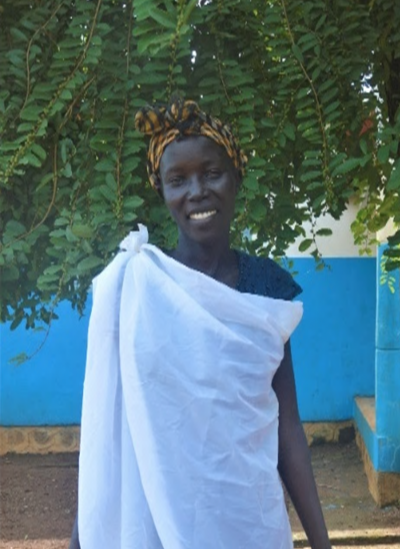
By Glynis Clacherty, lead researcher on the Alliance for Child Protection in Humanitarian Action's Community Engagement in Case Management project.
"My name is Nyarueni; I am 43 years old. When I was a child, I used to dream that one day I [would] become an educated and independent woman who would work for a brighter future for all women and girls in my community. I used to think that every dream of mine was reachable, until I experienced the chaos of the civil war back in my country, South Sudan.
I never imagined I would end up this way—being uneducated and all my dreams destroyed by things which were out of my control. I lost my hope and I gave up on my dream. It was all gone as a blink of an eye. I was forced to get married when I was only 17 years old, but I wasn’t angry with the decision of my parents because I had already lost my hope and at that time, “surviving” was all I was thinking about.
After a few years, I came to this refugee camp in Ethiopia. I looked at the situation of the children here, and I decided to step forward. I wished for them to live in a protected environment so that they can dream big and become successful and not lose their hope like I did. I have been working voluntarily as a child protection committee chairperson for the past three and [a] half years. I serve the children now. I facilitate meetings with the committee and develop action plans about what to accomplish in a certain time period. I conduct awareness raising and mobilization activities within communities about child protection concerns, [and the] available services to children with protection risks and child rights. I also do home visits and assist caseworkers in identifying children with protection risks, exploring alternative childcare options, and tracing parents or relatives of children.
I sometimes come to the child friendly spaces and tell resilience building stories to the children. I am proud that I am now giving children a chance to see a brighter future. It is never too late.”
Community volunteers, such as Nyarueni, are an integral part of preventing and responding to cases of violence, abuse, neglect and exploitation of children in humanitarian settings. They have a deep understanding of their communities, and help to identify children who are at-risk, have experienced harm, or have been separated from their family.
Nyarueni shared her story, along with other child protection volunteers from all over the world, as part of a project, led by the Alliance for Child Protection in Humanitarian Action, focused on promoting evidence-based best practices for the use of community volunteers in child protection case management in humanitarian settings.
Working on the project, our team has been overcome with a mix of admiration and awe for these volunteers. We feel proud to be colleagues with people who offer their hearts and minds, and often their money, to help children in their communities. We have learned how volunteers—who may not be highly educated—are able to incorporate child protection practices into contexts where social norms and the nature of humanitarian emergencies work directly against them. We have seen how volunteers are a bridge to services for children and their families.
Alongside this pride, though, we have also felt sadness. While volunteers experience many positives from their work, they also experience risks. Our research has showed that many projects engage community volunteers without carefully thinking through their roles and responsibilities.
We have heard stories of volunteers expected to work long hours, leaving no time for them to earn an income for their families, and of volunteers unable to sleep because they were worrying about handling high-risk cases without the support of experienced caseworkers. We also heard stories of volunteers being threatened by community members who assumed they were to be given certain items, such as food, from the volunteer because the role of the volunteers had not been properly communicated to the community.
The contrast between the commitment of our volunteer colleagues and the reality of what they often experience, has turned us into fierce advocates for the ethical engagement of volunteers. Our hope is that the key resources we have developed through the project—including advocacy materials for child protection organizations, governments, donors and policy makers, and guidance, tools and trainings for program designers and managers—will support this change.
Please visit the Alliance for Child Protection in Humanitarian Action website to access all resources associated with this project (including a study report and brief, a policy brief and a poster highlighting seven best practices for volunteer engagement). A toolkit, which includes guidance on ethically engaging community volunteers, as well as a manual for training volunteers in low-resource humanitarian settings, will also be available next year.

